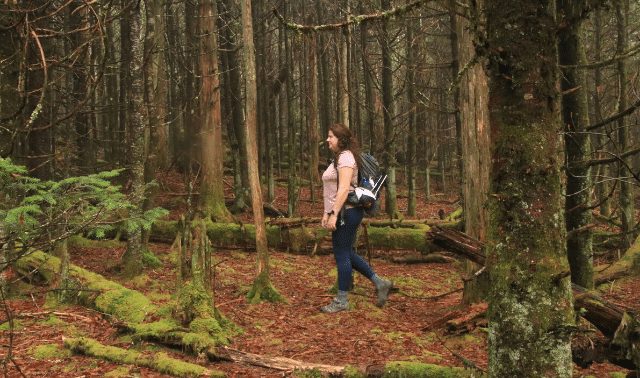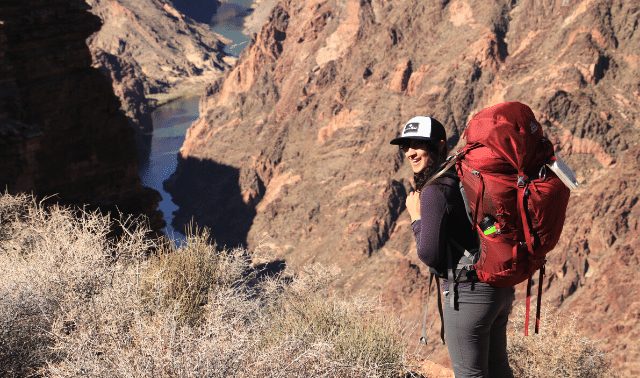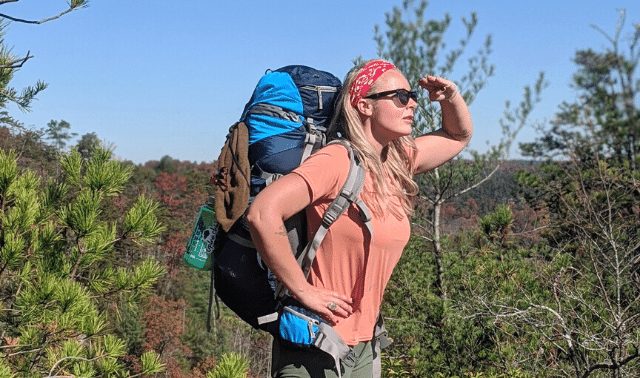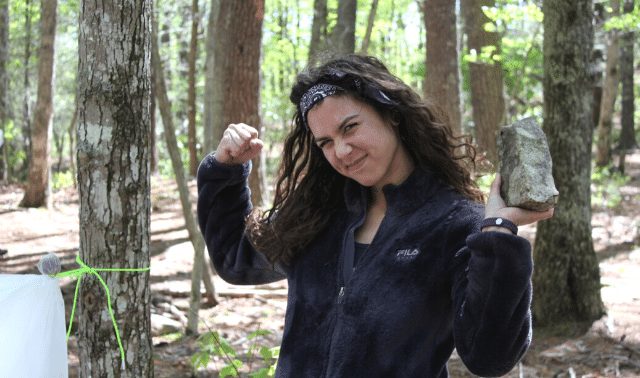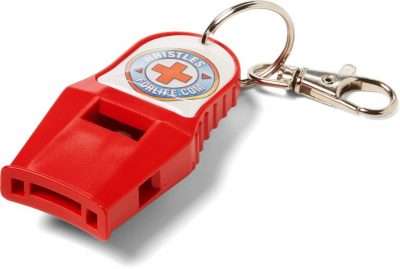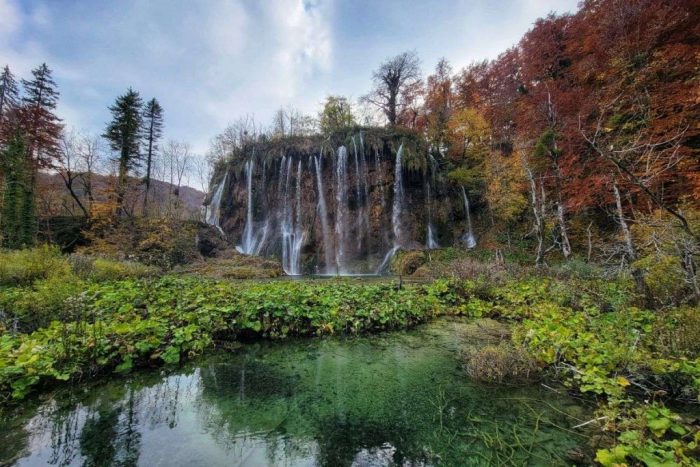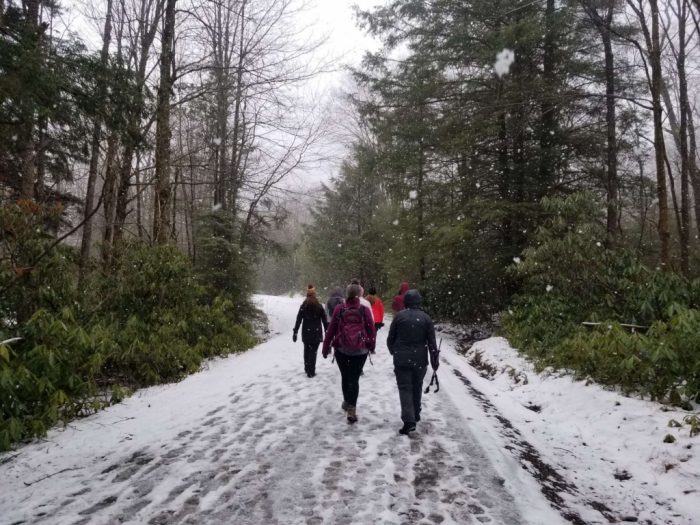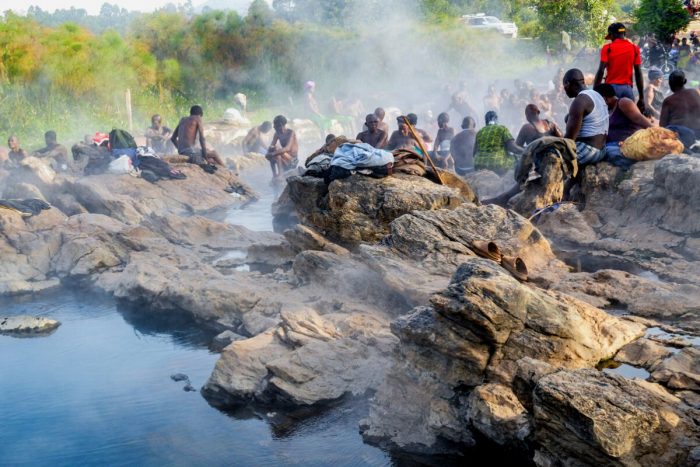11 Tips for Safely Hiking Alone as a Woman
Even the most social of butterflies needs her quiet cocoon time for reflection now and then. Hiking alone isn’t better or worse than hiking with your partner, friends, or family—it’s just a different way to enjoy the outdoors.
When you hike with others, it’s more of a social event. You get to know people in a different setting than usual, and there’s probably a lot of talking and laughing. Plus, let’s face it: you’re relatively safe as part of a group.
When you’re out in the wilderness alone, however, it’s different. There’s this sort of badass “edge” to solo hiking, right? Nobody’s there to help you if you run into trouble. You start thinking about how vulnerable you are and problem-solve quickly-even if it’s only in your head.
It’s an interesting experience, but not a bad one.
Whether you hit your favorite hiking trail solo or you head out for a road trip to your favorite national park alone, here are some safety tips for
The Benefits of Hiking By Yourself
The best aspect of hiking solo is that it’s all about you (damn straight!). Most of us enjoy being with friends and part of a group. But when we’re with others, our decisions and actions have to be made as part of that group. There is always a little tension involved in balancing all the individual needs.
Consider something as simple as taking a ten-minute breather on the trail. To some hikers it may be a much-needed rest. But to others, it may feel more like an interference in stride and rhythm. However, for the benefit of the group, a decision has to be discussed and made together. On the other hand, hiking by yourself means total freedom. It’s entirely up to you to decide when you eat or take a break. Want to jump in that alpine lake? Get a closer look at that weird tree fungus? Rip a giant fart? Go for it, sister.
Hiking alone also means peace and quiet. Can we get a hallelujah?! There’s a peacefulness that can’t be replicated when you’re with others. No words have to come between you and the beauty around you. The miles just flow. How often do you get to spend a day without having to communicate another human? Embrace the solitude!
And hey, if you’re not so keen for a solo hiking trip, then join other adventure-seeking women on the hiking trail. Sometimes, the best part of being a female solo hiker is find other women to go hiking with! Here are some of our favorite guided hiking and backpacking trips for women (where you might find your next hiking buddy):
Solo Hiking Safety Tips for Women
First, understand that 99.9% of hikers are a friendly bunch who are out to enjoy nature just like you are. Additionally, most of these tips are based on common sense, no-duh advice everyone hiking alone should follow—not just women. But let’s face it: Along with having to deal with boobs and periods, being a woman means we sometimes have to take extra precaution for our safety. Does this suck? Yes. Is it totally unfair? Yes. Is it something we are dealing with so we can have a happy and safe time alone on the trail? Yes.
So how can you make your alone-time hiking trip foolproof and totally safe? You can’t. What you can do though, is make it way safer.
1. Know your hiking abilities and your limits
Yes, we’re putting this first because we see you out there trying to be superwomen! It seems like we’re all constantly trying to push our limits and comfort zones because, “We can do it!” Yes, of course we can! But that doesn’t always mean we should. If this is your first attempt at hiking alone, don’t plan 20 miles on a crazy-hard backcountry trail. Stick to well-traveled trails (where it’s also more likely a fellow hiker will be by at least every hour). When it comes to your body, challenge it but don’t push it. Know what you can handle in the beginning and build from there, working your way up to the longer hike.
The same is true for solo backpacking. Even if you’re a backpacking pro, still start small with solo backpacking until you find a comfortable (and safe) plan.
2. Choose your trail ahead of time and get to know the terrain
“Plan your hike, and hike your plan”. To rush out on a hike alone without proper planning is asking for trouble-and we don’t mean the good kind. Use every resource available to get to know the trail before you set out.
One of the best resources is AllTrails.com. When you’re searching for the perfect solo hike, take the difficulty level into consideration. All Trails does a great job outlining the difficulty level, elevation gain, and type of terrain.

Also, check out the comments and photos posted by others. Are there streams to cross? Any elevation changes? Will it be rocky or smooth? Think about what you’re ready to tackle and what you aren’t.
If you’re heading out into wild places, then it’s a good idea to get an idea of what kind of wild animal you might encounter on the trail (um, no thank you bear attack). The comments and pictures on All Trails will likely mention any obvious threats.
If you’re heading into the Pacific Northwest (like Glacier National Park) in the United States, then you’re flirting with bear country. If you’re heading out to the Grand Canyon or another desert in North America, then the sun and heat will be your greatest threat.
Get to know what to expect from the natural elements ahead of time so that you can be prepared.
You Might Also Like: The Best Hiking Spots for Women in the US
3. Check the weather
Make sure you plan for sudden changes in temperature or precipitation. Even if What the Forecast?!! is proclaiming, “Bright and balmy all day, bitches!” you should still bring a few extra layers that protect against surprises. Remember, hypothermia is real, dangerous, and misunderstood — it can strike in relatively warm environments. Hypothermia (in case you don’t know) is rapid cooling of the body. This means it can be triggered by cold, wet, or a combination of both. You don’t want to mess with on any of your outdoor adventures, but definitely not alone.
4. Learn to read a map and use a compass
Time to finally earn that orienteering badge! This is one skill you will be happy to know (and hey, show off a bit). Let’s say you’re two miles off your route and can’t get a signal on your phone, then what? Knowing even the basics of orienteering can help you out of a potentially dangerous situation. Try to get a physical map of the trial that you plan on hiking, or print off a copy and bring it with you. Even if you like to wander, you should be able to know where you are on a map.
5. Let everyone (but not “everyone”) know your solo hiking plans
There are a number of security measures that you can put in place before leaving for your hiking trip alone. This involves telling your friends and family important information such as:
- your specific plans/routes
- the places exactly where you are going
- what day and what time you expect to return
- the directions you plan to follow and possible alternative routes
- your mobile phone number
- your vehicle description
- your license plate number
- the local authority phone numbers (sheriff’s department, police, fish and game commission) for the country or area that you will be in
If you’re relatively new to hiking by yourself, arrange to contact members of your family or friends within a certain timeframe. Keep them posted of your whereabouts and your safety. And for heaven’s sake, don’t announce on social media you’re planning on hiking alone or share your route.
6. Park your car in a conspicuous spot and leave information inside
It’s important to leave detailed information about your hiking plan in your car before you head out. Make sure it’s findable for rescuers, but not visible through the window. Explorer Chick Senior Guide Lauren shares why it’s important to take the extra time to do this.
If I’m hiking alone, I leave a folded up note on the seat of my car with the date, my ETA back to my car, and the route I’m hiking. If the police or park service pops my lock to check my car (if it’s been there longer than it should have), they’ll know where to look for me.
EXPLORER CHICK SENIOR GUIDE LAUREN
If you experience a serious problem, keep in mind the popular trails are usually well-patrolled and Search & Rescue will take action if called upon. However, DO NOT use this as an excuse to head out on a hike unprepared!
7. Remember your cell phone
Make sure you have your cell phone with you at all times and that it’s fully charged. Trying to “get away from it all”? No problem! You can turn it off and put it in the bottom of your pack. If you want to use it to take photos, at least make sure you turn on airplane mode. That way, it isn’t wasting precious battery life constantly looking for a signal.
8. Bring your dog
If you’ve got a dog, bring that pupper hiking with you! It’s a nice way to enjoy a little extra security. Plus, your bestest buddy will be beyond thrilled with an adventure full of smells and gross stuff to roll around in. Just make sure before you go that the trails you plan to hike are dog-friendly, and keep your furry friend on leash (always follow Leave No Trace).
9. Pack the 10 Essentials
Short or long hikes, these items should be with you no matter what:
- navigation (topographic map and a compass)
- sun protection
- insulation/extra clothing
- illumination (headlamp or flashlight; spare batteries)
- first aid supplies
- fire-making supplies (butane lighters, waterproof matches, fire starter)
- knife and repair tools
- snacks
- water
- emergency shelter
Make sure to double-check before you head out to see if anything needs replacing or updating.
10. Pack some extra protection
We’re not talking about that kind of protection. At least not without a cocktail in hand and a good hookup story. No, we’re talking about a few extra personal safety items you may want to think about bringing along as a woman. Both Lauren and Explorer Chick Guide Kirstie carry knives, which have the added benefit of being multipurpose tools for a variety of uses. Lauren also recommends pepper spray.
Trusting your gut is #1. If your instincts say something is up — it probably is. You should be vigilant.
EXPLORER CHICK GUIDE KIRSTIE
Another one of our Explorer Chick guides, Erin, recommends carrying a whistle. “They are already attached/built in to some packs but they are sometimes overlooked.” If your pack doesn’t come with a whistle, then this Whistles for LIFE will do the trick. This can come in handy in so many situations, from warding off grubby (read: aggressive) hikers to alerting rescue crews in the event that you are injured or lost.
11. Invest in a Hiking GPS/Satellite Communicator
Our Explorer Chick Guides are true explorers in every sense of the word. They love getting out and hiking solo. They also take hiking safely very seriously. One thing they never leave home without is a personal satellite communicator. Lauren opts for a Spot while Kirstie and Explorer Chick Guide Kimberly both rely on the Garmin inReach Mini. If you start hiking alone on a regular basis, do some research and find a device that works best for you.
I have a Garmin inReach Mini [and] it’s perfect for solo traveling. I can use it to track my hikes, camping, and fly fishing trips. It has weather, two way messaging anytime (especially great for backcountry trips with no service), and I can mark waypoints, see where I am with an app on my phone. Basically, it’s like having service when there’s not any. It marks my longitude and latitude and can even send updates to my family, friends, and posts on social media.
EXPLORER CHICK GUIDE KIMBERLY
Need more inspiration for where to go on your next solo hike? See some of our other posts for the best hiking trails in the US and the best places to travel solo in the USA!
Read More Hiking Inspiration
- How To Keep Your Feet Warm During Winter Hikes
- Where to Find the Best Hikes in Belize
- The Ultimate 6-Day Croatia Hiking Itinerary, According to Hikers
- Our Ultimate Bucket List of the Best Hikes in Europe
- How Heavy Are Your Thoughts on Trail? Tips for Negative Thinking While Hiking
- Best Hiking Routes in Scotland for the Trailblazer
- What To Wear Hiking In Hot Weather
- How to Lace Boots For Hiking: 7 Pro Lacing Techniques
- How to Identify Poison Ivy (And How to Treat an Allergic Reaction)
- 5+ Amazing Things To Do While Visiting Slovenia

